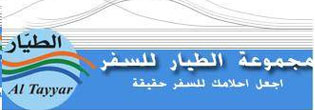This link between religion and language has made Islamic calligraphy one of the most revered forms of artwork within both the Arab and non-Arab worlds. Islamic calligraphy is known to have flourished and thrived during the Ottoman era where it transcended from a beautiful script into the venerated expression of celebrated spiritual art.
Today, Turkey still possesses some of the best expert calligraphers who produce some of the most elaborate and refined calligraphy pieces. The city of Istanbul acts as an open exhibition of some of the most complex pieces in the forms of inscriptions in mosques to public institutions and fountains.
But nowadays, good calligraphy is not limited to Turkey. In fact, many contemporary calligraphers come from around the globe. Workshops are set up all internationally with Pakistan and Lebanon being two of the main nations behind its contemporary resurgence and preservation.
Secular Arabic calligraphy has made a comeback with many design houses mastering it for corporate purposes. Calligraphy is viewed as part of the Arab world’s heritage, and therefore, many companies want to incorporate calligraphy as a means to draw on that connotation of culture and history.
Yet, non-secular calligraphy has remained a tradition. Many “old school” workshops teach the same techniques used centuries before. Islamic calligraphy also referenced the traditional arabesque — or geometric — art that can be found on 13th century mosques and in the page of the Qur’an. Contemporary artists in the Islamic world draw on the heritage of calligraphy and use calligraphic inscriptions or abstractions.
One such artist is Nina Amin. A few years back, Amin caught the calligraphy bug and has never looked back. The result has been a modern take on traditional calligraphy that appeals to the newer generation, while helping preserve this art of the older generation.
“I think calligraphy is one of the most beautiful forms of art,” explained Amin. “I didn’t start off as an artist all about calligraphy, but as soon as I tried it, I fell in love and have been doing it every since.”
Having lived in Riyadh for so many years, Amin was inspired by Islamic art seen in mosques and on many facades. “I wanted to pursue it and took workshops to master my skill,” she confessed.
But what makes Amin’s work so unique is that it is a beautiful pastiche of different scripts and styles. Although she implements the traditional forms, her manipulation of size and their deliberate juxtaposition makes her work ultra-contemporary.
Calligraphy contains two families of calligraphic styles. One is the oldest calligraphy script of Kufic — a modified form of the ancient Nabataean script — and the other consists of the cursive styles of Naskhi, Thuluth, Nastaliq and many others. Amin implemented a mélange of styles giving the viewer a rich visual tour of the traditional art.
She used traditional techniques and archaic symbolism in her pieces. She works on canvas and wood — my personal favorite — to create almost organic looking pieces. The script transforms before your eyes into vegetation while it grows across and out of the canvas.
“This theme is centered around the circle,” explained Amin, “It is an old symbol that means oneness.” Depending on the color palette — in which most of her work follows one of two distinct palettes: fire and water — the circle possesses a literal meaning in addition to its connotation of divinity and inclusivity of the universe. Amin often inserts the circle as a blazing sun of gold leaf and oil paints or a crisp, silver leaf moon, transfiguring her paintings of script into abstract landscapes. “I also include mosque domes a lot in my pieces,” she stated, which in turn urbanizes her landscapes of script.
Amin showcased her latest collection at Elegant Homes on Al Rawdah Street in Jeddah, Saudi Arabia. Part of the proceeds went to the Pakistani Relief Fund for victims of the latest floods. She currently lives in Riyadh with her husband and continues to paint and showcase her work regularly.










